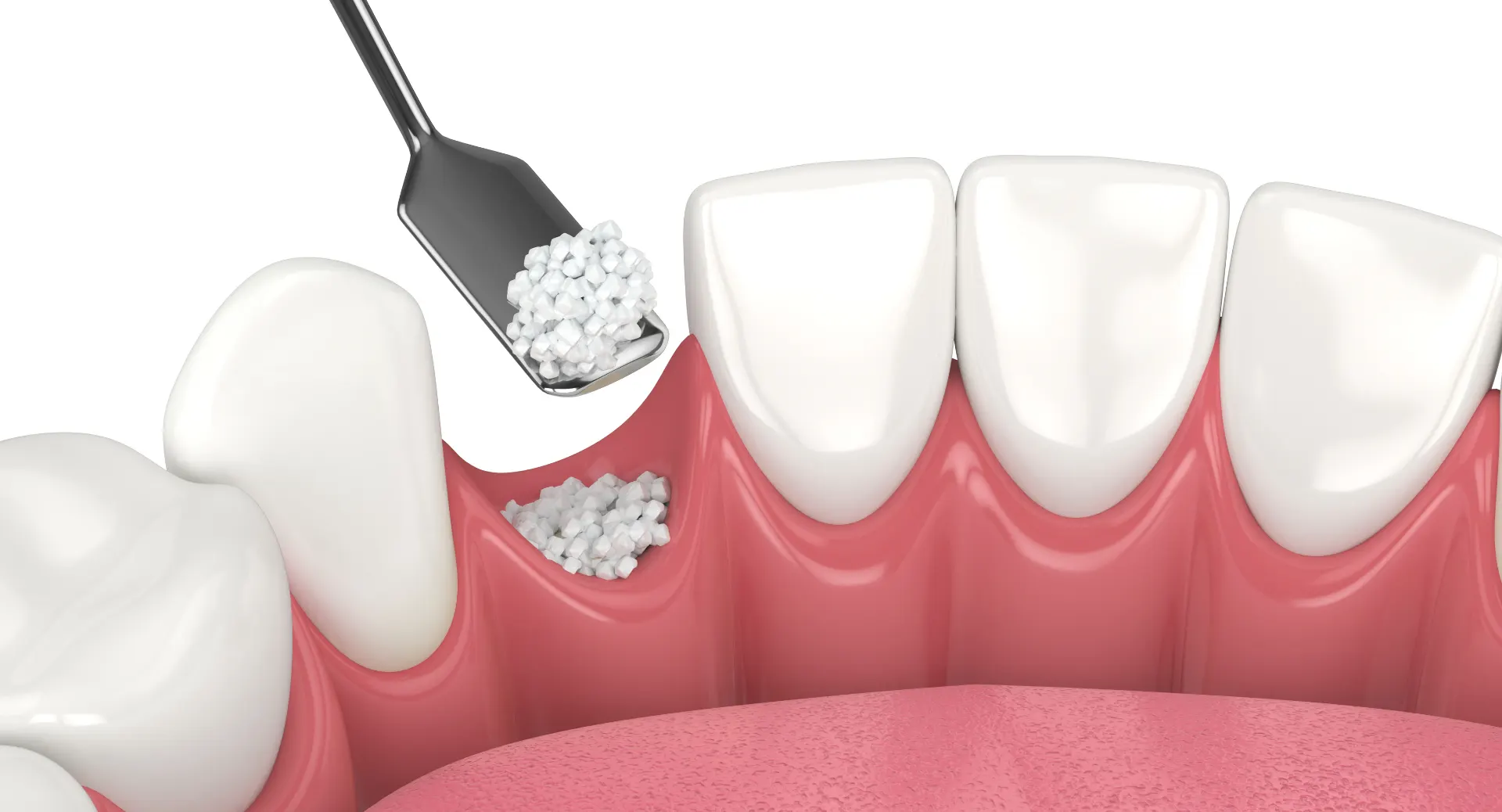Research has shown that dental implants are the ideal solution for patients who are missing one or more teeth because they look, feel, and function more like natural teeth. Unfortunately, not all patients qualify for dental implants because they require adequate bone density. When you are missing teeth, your jawbone will begin to deteriorate, sending the resources to other areas of your body. The good news is, it is possible to get a bone graft for dental implants.
A dental bone graft is a procedure in which volume and density are added to the jawbone where deterioration has taken place. This is typically done for adult patients who have lost one or more permanent teeth and/or have gum disease.
Dental implants require a healthy jawbone, which is why a bone graft for dental implants may be necessary. There are several reasons why jawbone loss may occur in both the upper and lower jawbone:
- Tooth Loss: if a tooth is missing for any reason, the jawbone in that area loses the stimulation from that tooth. When the stimulation is lost, the jawbone will begin to deteriorate, sending the resources elsewhere in the body.
- Dentures/bridges: when you replace your missing teeth with dentures or a dental bridge, you replace the look and some of the functionality. However, your jawbone is still lacking the stimulation it needs to be healthy. Therefore, it will begin to deteriorate.
- Malocclusion/Misalignment: if your teeth are misaligned, it could cause an issue known as “super-eruption”, which can lead to jawbone deterioration.
- Bite abnormalities: if you have an abnormal bite, the teeth don’t fit together properly. This can lead to jawbone deterioration due to too much/not enough pressure on certain teeth.
- Gum disease: gum disease, also known as gingivitis or periodontal disease, can cause tooth loss and ultimately, jawbone deterioration.
Dental implants are inserted into the jawbone, acting as artificial tooth roots. If there is not enough bone density to hold them in place, the risk of implant failure is increased.
There are three primary types of bone graft for dental implants:
Block bone graft
Typically done when there is substantial deterioration in the front of the jaw. The new bone is taken from the back of the jaw near the wisdom teeth.
Sinus lift
This type of bone graft is necessary when deterioration has occurred near the upper molars, which allows the sinus cavity to fall. The bone graft restores the upper jaw and moves the sinuses back to their appropriate position.
Socket graft
This type of bone graft is done at the same time as a tooth extraction to prevent deterioration.
We at Legacy Dental have a clear strategy when it comes to Bone Grafts in Salt Lake City, Utah. A dental bone graft is a common procedure and is treated similarly across the states. Here’s what you should expect:
- Before the procedure begins, the dentist will administer anesthesia. Since this is an invasive surgery, the patient will be sedated and vital signs will be monitored during the surgery.
- A dental tech will clean the area and the surgeon will make an incision where the bone graft will be placed.
- The new bone material will be placed between two sections of the jawbone and secured with special screws or a dissolvable adhesive. The incision will be stitched up and the patient will be sent home to heal.
The patient will be sent home with gauze packed around the incision and instructions for when it should be changed out over the next 24 hours. In addition, patients are typically given a prescription antibiotic and pain relievers.
- For the first 24 to 48 hours, ice packs can help reduce pain and swelling
- Soft, bland foods are recommended for the first few days
- For the first 24 to 48 hours, it’s important to sleep with the head elevated to keep blood from pooling at the surgical site.
- Avoid hot liquids, hard/crunchy foods, and physical activity during the recovery period
- Visit the dentist periodically throughout recovery to monitor healing progress
After about a week, the pain will begin to improve. After a few weeks, most patients can begin to transition back to their normal activities and diet. However, the jaw may require a few months before implants can be placed.








